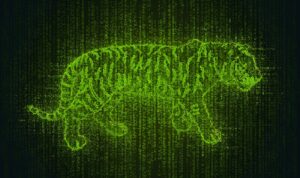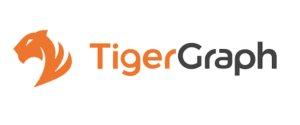
TigerGraph Cloud’s New Capabilities Help Close the Data and Decision Gap

(green_life/Shutterstock)
TigerGraph has introduced new updates for security, advanced AI, and machine learning capabilities to streamline the adoption, deployment, and management of its TigerGraph Cloud, a native parallel graph database-as-a-service.
Graph databases are organized to find patterns and relationships between stored data nodes within a variety of data formats and systems and are popular for use cases such as AI and machine learning, fraud detection, and recommendation engines. Gartner predicts that by 2025, 80% of data and analytics innovations will include graph technologies, up from 10% in 2021. One particularly pertinent use case for a graph database is explainable AI. TigerGraph’s platform offers many data and ML exploration features that allow users to go beyond the black box and find out why an AI algorithm made a specific decision.
“Graph is a crucial tool for solving business challenges and TigerGraph is committed to helping customers unlock the full potential of their data by using ML and AI to close the gap between data and decisions,” said Jay Yu, VP of product and innovation at TigerGraph in a statement.
TigerGraph is a native graph database, meaning it is specifically designed to store and query connected data rather than non-native graphs that were designed for other purposes but have added graph capabilities. TigerGraph says a native graph database is better for customers with an application that frequently queries and harnesses the relationships between users, products, locations, or any other entities, or if the use case leverages network effects or requires multiple-hop queries across data.
 The company lists the following new capabilities in TigerGraph Cloud version 3.9:
The company lists the following new capabilities in TigerGraph Cloud version 3.9:
- Enhanced data ingestion: Simplified streaming data ingestion setup and support for the popular Parquet data format with enhanced progress monitoring and messages.
- Parquet file format: Added support for the de facto open source storage format for big data as a data source.
- Multi-edge support: Ability to allow multiple edges of the same type to exist between two vertices, simplifying the support of time-series and many other use cases.
- Enhanced graph data science package: Achieve more scalable graph embedding with NodePiece and pyTigerGraph support for TigerGraph’s packaged algorithms with just-in-time compilation.
- Improved DevOps support: Access to detailed operational information, visually displayed by the Admin Portal; monitor individual queries and real-time status of each TigerGraph service and its dependencies.
- Expanded Kubernetes functionality: Access to operator support for backup, cluster expand/shrink.
- Expanded self-service graph visual analytics: Improved productivity via collaborative editing and viewing capabilities on shared visual graph dashboards.
TigerGraph also announced it has seen 100% YoY growth of TigerGraph Cloud. The platform is available as self-managed enterprise or on fully-managed cloud services including AWS, Google Cloud Platform, and Microsoft Azure. Users can deploy and maintain multiple graph database solutions with visual analytics and ML tools, the company says, asserting that they can get started in minutes, build a proof-of-concept model in hours, and deploy a solution to production in days.
There are also more than 20 starter kits available, covering use cases such as explainable AI, fraud detection, supply chain analysis, and cybersecurity. These starter kits are pre-built with sample graph data schema, dataset, and queries focused on specific use cases.
In addition to these new features, TigerGraph incorporated its findings from several large scale deployments of TigerGraph Cloud in order to bolster its product stability and security: “Based on direct feedback from enterprise customers relying on TigerGraph to power mission-critical graph applications, this new release offers more advanced machine learning capabilities that allows customers to supercharge their data analytics projects at scale, with speed, and in the most collaborative way possible,” said Yu.
The latest version of TigerGraph Cloud is available now. There is a free tier offering that can be found here.
Related Items:
TigerGraph Bolsters Database with Graph Analytics and ML
TigerGraph Unveils ML Workbench, Winners of Its ‘Graph For All Million Dollar Challenge’
































